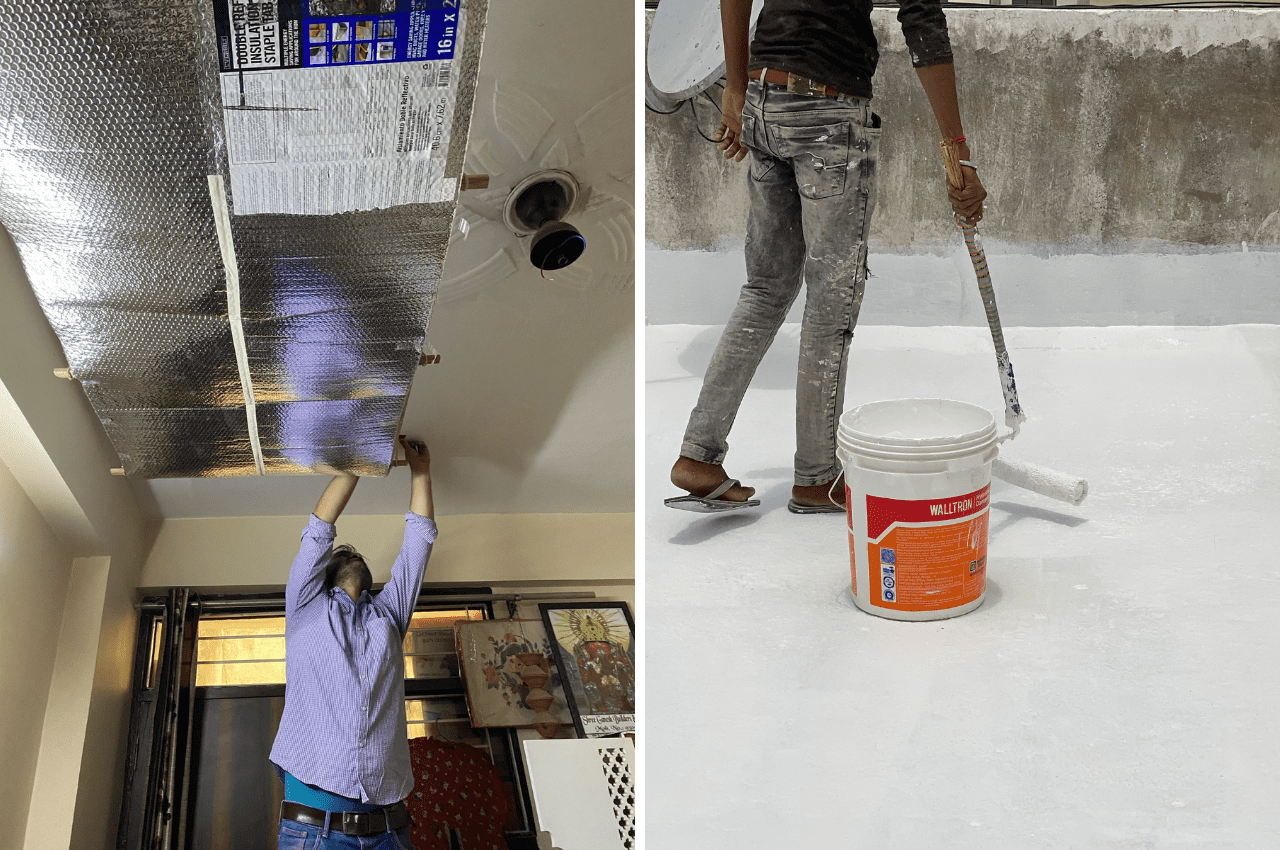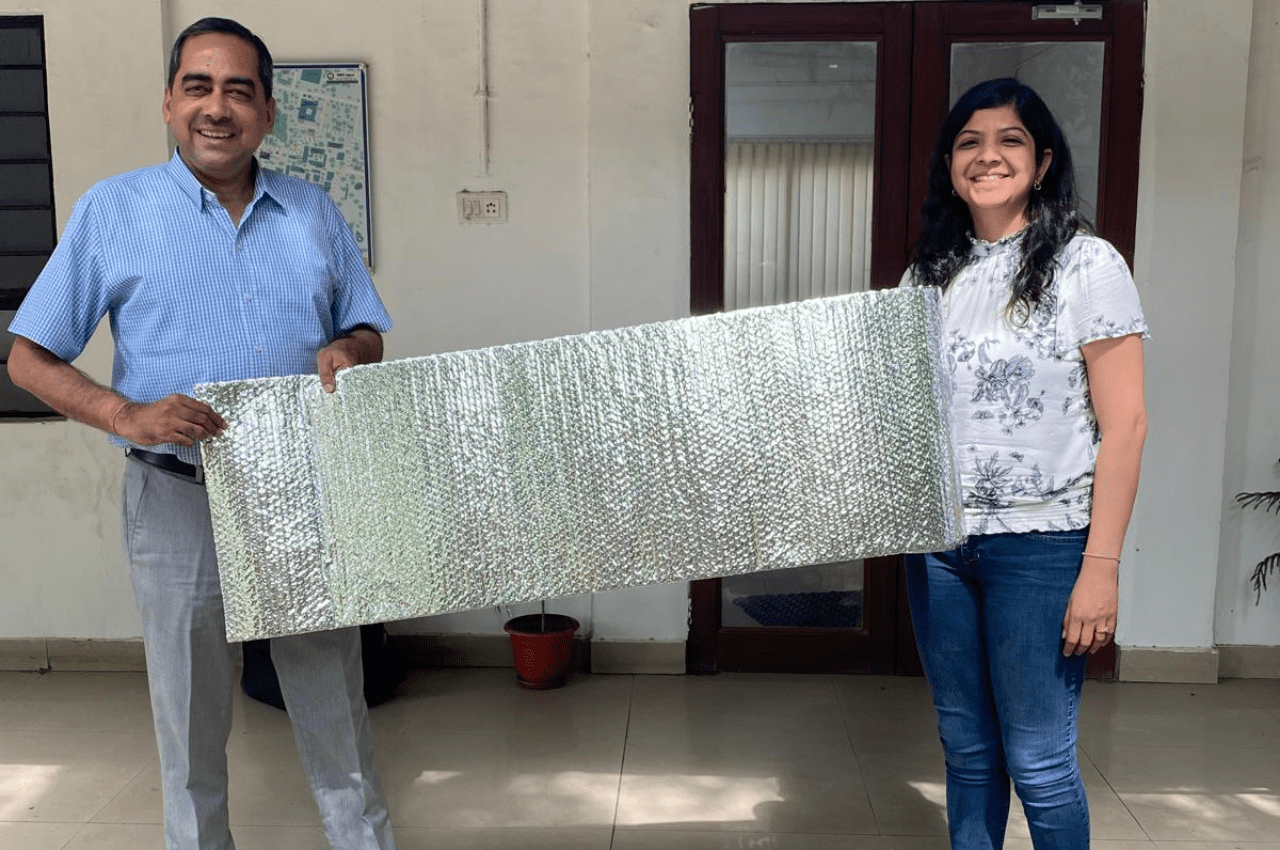Rising temperatures are pushing Indian cities to the limits of urban livability, with residents in rooftop rooms particularly affected by exposure to extreme heat from sun-baked concrete roofs. To address these challenges, the project “Ultra-Low Cost Solutions for Overheating and Sleep Disruption in South Asian Homes” was initiated with support from a Mittal Institute Faculty Research grant. The project was led by Holly Samuelson, Associate Professor of Architecture in the Building Technology Program at the Massachusetts Institute of Technology (formerly at the Harvard Graduate School of Design), and executed by Mayuri Rajput, Fellow at the Center for Green Buildings and Cities, in collaboration with the Centre for Energy and Environment at Malaviya National Institute of Technology (MNIT), Jaipur. The study, conducted from February 2024 to January 2025, investigated how low-cost, easily deployable building interventions can enhance thermal comfort, safety, and energy efficiency in India’s housing stock.

Prof. Holly Samuelson
Field Research and Scalable Solutions
The study tested a new approach to quantify and reduce radiant heat exchange between occupants and hot ceilings, an often-overlooked factor in indoor comfort. It began with field monitoring in three test buildings in Jaipur, measuring key performance metrics, including air temperature, humidity, mean radiant temperature, air velocity, and surface temperatures. Using this data, the team built computational models that accurately replicated building performance and tested the thermal and cost efficiency of various interventions.
To validate their findings, lightweight radiant barriers below ceilings and cool roof coatings that reflect shortwave radiation from sun to reduce heat absorption were installed in one of the buildings. Data from this mock-up is now informing architectural interventions that can alleviate extreme heat exposure in built spaces and estimates of potential energy savings.
Challenges and Learnings
While training students to use laboratory equipment, such as thermocouples and heat stress meters, was time consuming and the calibration of building models was a labor-intensive process, these processes contributed to valuable skill development.
A major takeaway from the research is that much of today’s building science knowledge originates from experiments in Western contexts, focusing on insulated buildings that differ dramatically from India’s dense, concrete structures. To accurately assess comfort in the developing world, the project highlighted the need to adapt global metrics and methods to local building conditions.

(left) Installation of a temporary Radiant Barrier to test effectiveness | (right) Application of Cool Roof paint on one of the pilot roofs
The findings also challenge conventional assumptions about how humans experience heat indoors. While building models often treat the human body as a single point in space, this project aimed to demonstrate how that approach fails to capture real comfort conditions—particularly for individuals lying under uninsulated concrete or stone roofs in cooling dominated climates. In such cases, the hot ceiling overwhelmingly dominates the body’s radiant heat exchange. The team developed a refined method to measure thermal comfort in these situations, providing a more realistic understanding of occupant experience
Cool Roofs and Radiant Barriers: Proven Impact
The results show that cool roofs and ceiling-hung radiant barriers can significantly reduce heat exposure and enhance thermal comfort, especially in homes without mechanical cooling systems. When air conditioning is present, these interventions also translate into measurable energy savings. This dual benefit makes them both cost-effective and climate-resilient solutions for India’s future housing.
Moving Forward
The team is currently preparing a manuscript for publication to share these findings with the broader building science community. Beyond its technical outcomes, the project underscores an important shift—rethinking thermal comfort from the perspective of the developing world and ensuring that design solutions work for the realities of everyday living in India’s heat-stressed cities.

Jyotirmay Mathur, Professor of Mechanical Engineering at MNIT Jaipur, and Mayuri Rajput, Fellow at the Center for Green Buildings and Cities, holding a Radiant Barrier before installation.
Read more about Faculty Work on Climate here.
Read more about Climate Change in South Asia here.
Applications are open for Faculty Multidisciplinary Research Grants 2026-2027!
Written by Angarika Datta, Communications and Outreach Manager.
☆ The views represented herein are those of the interview subjects and do not necessarily reflect the views of the Mittal Institute, its staff, or its steering committee.
